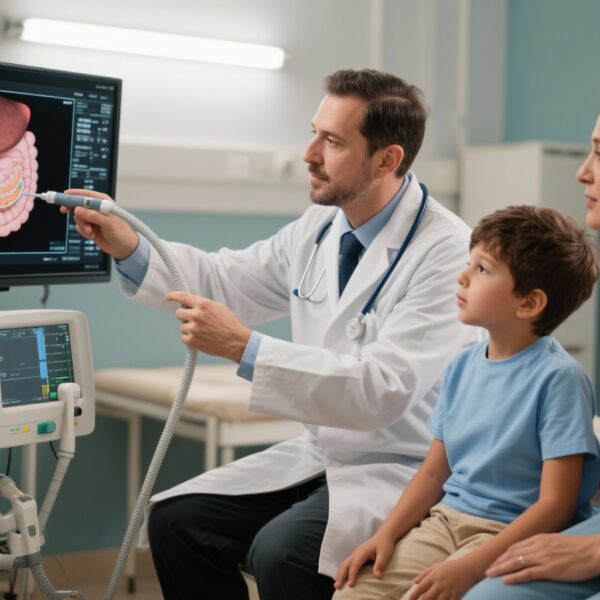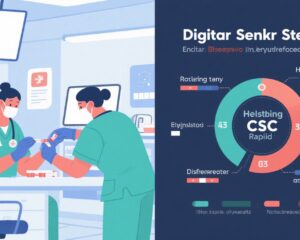Highlight
- Transcutaneous auricular vagus nerve stimulation (taVNS) significantly reduces facial erythema and flushing in patients with erythematotelangiectatic rosacea (ETR).
- taVNS also improves systemic symptoms including anxiety, depression, insomnia, fatigue, and facial migraine.
- Clinical benefits persist for 24 weeks after only a 3-week treatment course.
- The therapy is well tolerated with minimal, mild adverse events.
Study Background: Clinical Context and Unmet Needs in Erythematotelangiectatic Rosacea
Rosacea is a chronic inflammatory dermatologic condition that predominantly affects the central face. Among its subtypes, erythematotelangiectatic rosacea (ETR) is characterized by persistent facial erythema, prominent visible blood vessels (telangiectasias), and frequent flushing episodes. ETR can severely impair quality of life due to cosmetic concerns and associated neuropsychiatric comorbidities including anxiety, depression, and sleep disturbances. Current treatments primarily focus on symptom management using topical agents, oral medications, and laser therapies, often requiring continuous administration and posing risks of side effects or incomplete relief. There remains an unmet need for novel, non-pharmacological, cost-effective therapies that provide sustained symptom control and address systemic manifestations.
Vagus nerve stimulation (VNS) has emerged as a neuromodulation technique with anti-inflammatory and autonomic regulatory potential. Transcutaneous auricular VNS (taVNS) noninvasively stimulates the auricular branch of the vagus nerve via the external ear, modulating inflammatory pathways and neuronal circuits. Previous studies have explored taVNS in conditions such as migraine and epilepsy, but its application in dermatologic diseases like ETR had not been systematically evaluated until recently.
Study Design and Methodology
This was a single-center, randomized, double-blind, sham-controlled clinical trial conducted in China from February to August 2024. The study enrolled 72 adult patients (mean age 29.5 years, 93.1% women) diagnosed with erythematotelangiectatic rosacea confirmed by Clinician Erythema Assessment (CEA) scores ≥ 2. Participants were randomized 1:1 to receive either active taVNS or sham stimulation.
The intervention group underwent daily transcutaneous auricular vagus nerve stimulation at 30 Hz frequency and 200 μs pulse width for 30 minutes per day, for 3 consecutive weeks. The control group received sham stimulation mimicking device application without effective nerve stimulation.
Primary endpoint was the change in CEA score after the 3-week treatment period. Secondary outcomes included patient-reported measures of erythema severity, facial flushing frequency and intensity, sleep quality, migraine frequency and severity, anxiety and depression scores, and fatigue levels. A 24-week post-treatment follow-up was performed to assess durability of responses. Safety outcomes were monitored through adverse event reporting.
Key Findings
After 3 weeks of treatment, the taVNS group demonstrated a statistically significant reduction in the primary outcome, with mean CEA scores decreasing by an average of 0.92 points compared to sham (P < .001). This reflects a meaningful clinical improvement in facial erythema.
Secondary outcomes revealed robust improvements with taVNS therapy versus sham across multiple systemic and skin-related symptoms:
- Flushing severity mean difference (MD): -2.36 (P < .001)
- Erythema MD: -0.97 (P < .001)
- Anxiety score MD: -5.42 (P < .001)
- Depression score MD: -6.22 (P < .001)
- Insomnia severity MD: -7.93 (P < .001)
- Fatigue MD: -17.77 (P = .002)
- Facial migraine MD: -2.42 (P < .001)
The benefits noted at 3 weeks were sustained consistently throughout the 24-week follow-up, highlighting prolonged therapeutic effects after a short treatment course.
Regarding safety, treatment-emergent adverse events occurred in 5.6% of participants receiving taVNS and 8.3% in the sham group, all mostly mild and resolving spontaneously within 1–5 days, indicating a favorable tolerability profile.
Expert Commentary and Mechanistic Insights
The observed efficacy of taVNS likely arises from its modulatory effects on the autonomic nervous system and anti-inflammatory pathways. Vagus nerve stimulation inhibits pro-inflammatory cytokines and enhances parasympathetic tone, potentially reducing neurogenic inflammation in rosacea. Improvement in neuropsychiatric symptoms and fatigue further supports central nervous system modulation.
While this trial was rigorously designed, certain factors warrant consideration. The study population was predominantly young women, which may limit broad generalizability. Additionally, the single-center setting and 24-week follow-up, though noteworthy, call for confirmation in larger, multicenter cohorts with longer-term assessments.
Importantly, the sham control strengthens confidence in true efficacy beyond placebo, a critical benchmark in neuromodulation research. Future work may explore optimization of stimulation parameters and integration with existing therapies.
Conclusion
This randomized controlled trial provides compelling evidence that transcutaneous auricular vagus nerve stimulation is a novel, safe, and effective approach to managing erythematotelangiectatic rosacea. It not only ameliorates hallmark cutaneous symptoms such as erythema and flushing but also improves systemic comorbidities including anxiety, depression, insomnia, fatigue, and migraine.
The durable benefits observed 24 weeks post-treatment after only a 3-week stimulation course suggest taVNS could represent a cost-effective alternative or adjunct to conventional therapies. Given its noninvasive nature and favorable safety profile, taVNS holds promise for expanding therapeutic options in ETR, potentially transforming patient care by addressing both skin and psychoneurological aspects.
Further research is warranted to validate these findings across diverse populations, elucidate mechanistic pathways, and refine clinical protocols for vagus nerve-targeted neuromodulation in rosacea and related inflammatory skin diseases.
Reference
Li J, Wei J, Zhang M, Kong M, Xie L, Wan M, Pan Z, Tian J, Ou Z, Chen S, Xia A, Tang L, Song Z, Hou J, Hao F. Transcutaneous Auricular Vagus Nerve Stimulation Treatment for Erythematotelangiectatic Rosacea: A Randomized Clinical Trial. JAMA Dermatol. 2025 Oct 8. doi: 10.1001/jamadermatol.2025.3796. Epub ahead of print. PMID: 41060641.






